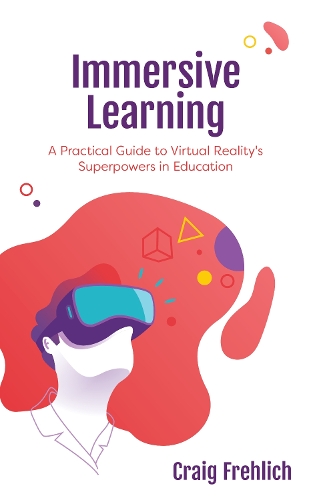
Immersive Learning: A Practical Guide to Virtual Reality's Superpowers in Education
(Paperback)
Available Formats
Publishing Details
Immersive Learning: A Practical Guide to Virtual Reality's Superpowers in Education
By (Author) Craig Frehlich
Bloomsbury Publishing PLC
Rowman & Littlefield Publishers
16th September 2020
United States
Classifications
Professional and Scholarly
Non Fiction
Teacher training
Teaching of a specific subject
Educational: Sciences, general science
371.33468
Physical Properties
Paperback
170
Width 153mm, Height 221mm, Spine 13mm
259g
Description
Most people want to reach their maximum potential; and the use of tools are no different. Some say power is influence. If this is true, then virtual reality has superpowers because of its ability to make the unreal viscerally real, engaging and immersive. Thanks to these powers VR can influence and affect education in ways that no technology tool has in the past. This book will help people understand the power and true potential of virtual reality (or VR). The prime directive of this book is to provide educators with a way of thinking about how to use virtual reality in education in order to reveal its true superpowers. And, to arm educators with several hands-on lessons to get them started on implementing VR as a tool to enhance learning outcomes. Ultimately, the book aims to have educators clearly understand VRs role in transforming education, thus reaching its maximum potential.
Reviews
Craig Frehlich has written the road map to transformative teaching and learning using immersive learning! Read this book if you are a teacher--and assign this book in every School of Education--because virtual reality is the future and Craig shows us where we are going and the best way to get there! -- Angelina Dayton, EdD, owner, "The VR Lady" www.thevrlady.com; 25 years experience in technology and education
Author Bio
Craig Frehlich has been working in education for over 25 years and has his Masters Degree in Education with a focus on curriculum design. He is also an educational consultant and speaker on the topics of inquiry, design thinking, and the use of technology in education. Craig is currently an academic advisor for Springboard VR. His main focus is to use contextual and conceptual thinking to translate VR experiences into lesson guides that help map successfully introspective journeys in virtual reality.
